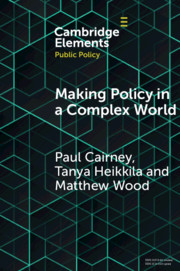Element contents
Making Policy in a Complex World
Published online by Cambridge University Press: 01 February 2019
Summary
Keywords
- Type
- Element
- Information
- Series: Elements in Public PolicyOnline ISBN: 9781108679053Publisher: Cambridge University PressPrint publication: 07 February 2019

